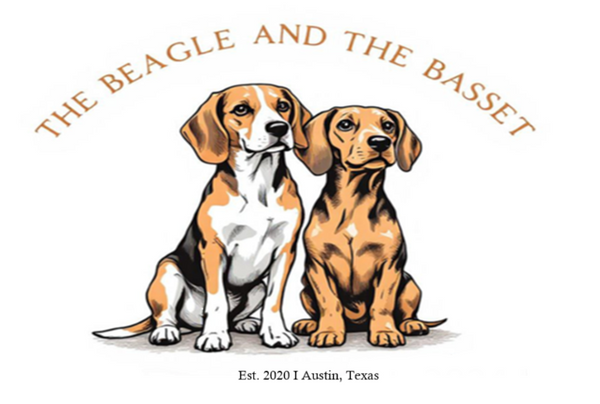
Anything, Everywhere, All at Once: Unpacking the Resale Revolution
Remember when "thrifting" meant dusty racks and a hopeful dive into the unknown? Well, much like the internet itself, the world of secondhand goods has gone from a niche pursuit to a sprawling, interconnected universe, offering "anything, everywhere, all at once."
The thrift and resale market isn't just booming; it's undergoing a seismic shift, driven by a powerful trifecta of economics, culture, and environmental consciousness. But is this a fleeting fad or a fundamental change in how we consume? And what does the future hold for our beloved treasure hunts?
The Resale Renaissance: What's Happening Now?
Today's secondhand market is a vibrant ecosystem, far removed from the charity shop stereotypes of old.
-
Digital Dominance: Online platforms have transformed resale. From Depop to The RealReal, Poshmark to Vestiaire Collective, finding that specific vintage denim jacket or a pre-loved designer bag is now just a few clicks away. AI is enhancing search, personalization, and even pricing, making secondhand shopping astonishingly efficient.
-
Mainstream Appeal: Thrifting has shed its stigma and become undeniably cool. Gen Z and Millennials, in particular, are driving this trend, embracing secondhand not out of necessity, but as a conscious choice for unique style, affordability, and sustainability. It's about curation, personal expression, and rejecting fast fashion's fleeting trends.
-
Brands Jumping In: Even major retailers and luxury houses are recognizing the power of recommerce. Brands are launching their own "take-back" programs and dedicated resale channels, integrating circularity directly into their business models. They're realizing that consumers demand more sustainable options.
Fad or Future? The Good, The Bad, and The "It's Complicated"
So, is this just a trendy moment, or are we witnessing a lasting transformation? The answer is nuanced, but overwhelmingly points towards a lasting shift.
The "Good": A Sustainable & Savvy Choice
At its core, the rise of resale is a win for the planet. Extending the life of a garment dramatically reduces its environmental footprint, saving water, energy, and diverting waste from landfills. For conscious consumers, it's a powerful way to vote with their wallets for a more circular economy.
Financially, it's a no-brainer. Secondhand offers access to quality goods, designer labels, and unique vintage finds at a fraction of the original price. This democratizes fashion and makes high-quality items accessible to more people.
The "Bad": Unintended Consequences
However, the surge in popularity isn't without its complexities. The phenomenon of "thrift store gentrification" is a real concern. As more people, particularly those with higher disposable incomes, flock to traditional thrift stores, demand rises. This can inadvertently drive up prices, making essential clothing less accessible for the low-income communities who have historically relied on these stores for affordable necessities.
Similarly, the rise of professional resellers, while part of the market's dynamism, can mean that the "best" finds are quickly snapped up, leaving less diverse inventory for casual shoppers. The line between sustainable consumption and simply buying more (albeit secondhand) can also blur, raising questions about whether we're truly changing our habits or just shifting where we acquire our overconsumption.
The Crystal Ball: What's Next for Resale?
The future of thrift and resale isn't just bright; it's brilliantly integrated into the very fabric of retail.
-
Explosive & Embedded Growth: Expect the secondhand market to continue its rapid expansion, becoming an indispensable part of how we shop. It won't just be an alternative; it will be another primary retail channel.
-
Tech-Driven Efficiency: AI will become even more sophisticated, not just for pricing and inventory but for personalized recommendations, virtual try-ons, and even predictive analytics on what items will have the best resale value. Authentication technology, perhaps powered by blockchain for luxury items, will build even greater trust.
-
Brand Recommerce Everywhere: More and more brands, from fast fashion to luxury, will launch their own robust resale programs. It won't be enough to just offer "sustainable lines"; brands will need to participate in the entire lifecycle of their products.
-
Beyond Clothing: The circular economy mindset will permeate other sectors. Expect advanced resale and rental models for furniture, electronics, tools, and even specialized equipment to become commonplace.
-
A New Consumer Mindset: The default will increasingly shift from "buy new" to "consider secondhand first." This isn't just about saving money; it's about making a conscious choice for quality, longevity, and a lighter footprint.
The resale revolution is far more than a passing fad; it's a fundamental redefinition of value, ownership, and sustainability in the consumer landscape. While there are challenges to navigate, the overarching trend is clear: the secondhand market is here to stay, offering us an incredible array of possibilities, "anything, everywhere, all at once."
What are your thoughts on the resale revolution? Share your experiences and predictions in the comments below!
